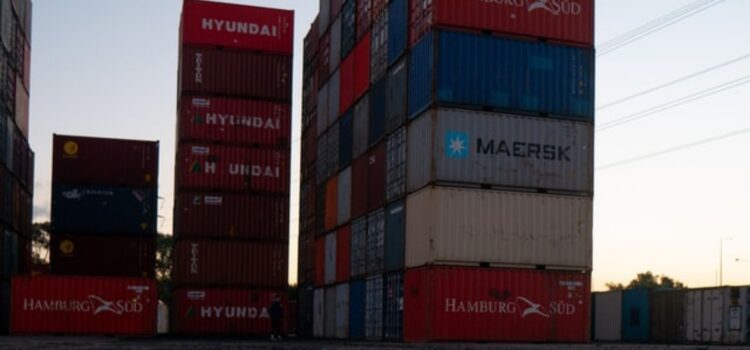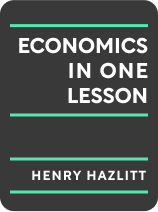

This article is an excerpt from the Shortform book guide to "Economics in One Lesson" by Henry Hazlitt. Shortform has the world's best summaries and analyses of books you should be reading.
Like this article? Sign up for a free trial here .
How do tariffs impact the economy? Does imposing import tariffs help or hinder the country’s internal industries?
According to economist Henry Hazlitt, tariffs are not as benevolent for the economy as many people believe. Tariffs shift money, manpower, and productivity away from efficient industries in order to support inefficient industries.
In this article, we’ll consider Hazlitt’s argument on the negative effects of tariffs on employment and the economy at large.
Tariffs Support Inefficient Industries
According to Henry Hazlitt, the author of Economics in One Lesson, tariffs are a misguided attempt to support employment that, in reality, has no impact on employment and actually hurts production and wages.
With tariffs, companies that aren’t efficient and productive enough to compete in the global market are able to stay in business. Without tariffs, the resources and manpower that would have gone to those inefficient businesses can be redirected to industries that have high production levels, which increases overall productivity. Higher productivity leads to greater national wealth, which raises wages overall. In other words, everyone benefits when people can buy what they want at the best price available, because that structure supports the businesses that are most productive and efficient.
As with everything else, there are certain tariffs that may be necessary, such as those supporting essential wartime industries. Problems arise when the tariffs are imposed primarily to support American employment, wages, or wealth, as we’ll see in the next example.
Tariffs’ Invisible Consequences
So, how do tariffs impact the economy? Let’s look at the impact of tariffs using the example of an American sweater manufacturer. The U.S. company sells sweaters for $30 each, and it’s losing business to a British manufacturer that sells sweaters for just $25. The American company asks the government to impose a $5 tariff, which makes the British sweaters cost $30 for Americans and allows the U.S. company to be competitive. Proponents of the tariff point to all the employees of the American company who will lose their jobs if the business fails. Passing the tariff keeps American sweaters workers employed so that they can earn money to spend, thereby supporting wages in other industries.
However, the British company then has fewer profits to spend on goods, including imports from the U.S. The tariff that helped the American sweater industry hurts other industries, especially those with large export markets. In the sweater example, the tariffs hurt British sweater sales, which means that those manufacturers have less money to import American wool and American-made parts for its machines.
On the other hand, if the tariff is denied, there are several positive ripple effects:
- Consumers who buy British sweaters at $25 will have $5 in savings to spend and support other industries.
- The workers at the American company are likely to lose their jobs—but consumers’ increased buying power and support of other industries means that there are other jobs available. As a result, there is no net effect on national employment.
- The British company enjoys higher sales and greater profits, which it can spend on buying other goods (the company itself will spend some of the profits, as will the workers whose wages are paid by sales). Some of this money will inevitably be spent on importing American goods, which brings wealth back into the U.S.
If an existing tariff is repealed, the net effects will be positive, but there is an immediate negative impact on workers and companies within that industry. Many—if not all—of the firms will go out of business, and those employees will be out of work. Employees that have specialized training and skills will suffer an even greater loss, since they’ll be forced to enter another industry at a lower level of expertise and, most likely, pay. This is another danger of imposing tariffs in the first place: Not only do they do harm while they’re in effect, but also if they’re repealed.
Imposing Tariffs to Enable the Birth of an Industry
Alternatively, consider the impact if the American sweater-making industry doesn’t exist yet, but lobbyists are proposing a tariff on British sweaters so that the U.S. can enter the global sweater market. In this case, when American consumers buy a $30 sweater, they are essentially paying a $5 tax to subsidize the U.S. sweater industry.
At first glance, it appears that the creation of the sweater industry necessarily creates jobs that didn’t exist before. However, the 50,000 workers who get jobs making sweaters are 50,000 workers who are unavailable to work in other industries—and if the American sweater industry didn’t exist, consumers would have $5 extra to spend in other industries to support those 50,000 workers.
Fallacy: Having more exports than imports leads to higher employment, wages, and national wealth.
Reality: The value of exports and imports must be equal.
Besides a misunderstanding of the negative effects of tariffs, there are a number of fallacies surrounding the benefits of exports. Many people assume that more exports mean more American profits, which mean more American wealth—but, in reality, exports merely pay for imports. Imports are of greater value, because they give consumers access to goods that either aren’t available domestically or that are priced better than comparable domestic goods.
When a British company imports American goods and pays in British pounds, the American company then has two options:
- Use the pounds to buy imported goods from a British company
- Exchange the pounds for U.S. dollars, which is essentially selling the British currency to someone who can use the pounds to buy imported goods
Alternatively, when the transaction is done with American dollars instead of British pounds, the British importer can only pay if she has access to dollars from a previous export. American exports bring in the money to pay for imports, and imports give other countries the dollars to pay for American exports.
Paying Other Countries to Import American Goods Creates a Net Loss
The misguided value placed on exports has led to practices that are meant to stimulate American exports, but that actually reduce national wealth.
One of these practices is giving foreign countries loans that can fund their import of American goods. Often, the countries are unable to repay the loans. People often believe that the boost to exports more than makes up for the defaulted loans, but, in actuality, the American government has essentially paid for its own exports. Put another way, the country has given its goods away for low or no cost. As an analogy, if a car company loans you $25,000 to buy one of its cars, and you don’t repay the loan, the company suffers a net loss despite the fact that it sold a car.
Another misguided practice is giving export subsidies, which helps foreign countries cover the cost of importing American goods by giving cash payments, loans, or tax cuts for exporters. Again, the boost to exports is an artificial gain, because much of the cost has been covered by the U.S. government. In either case, individual export businesses may gain from loans and subsidies, but the country, as a whole, loses. The government must fund these loans and subsidies with tax dollars, which means that taxpayers have less money to spend. The money taxpayers lose to taxes could have been spent on goods and services, and the industries providing those goods and services could have used those profits to expand production, which would have contributed to national wealth.

———End of Preview———
Like what you just read? Read the rest of the world's best book summary and analysis of Henry Hazlitt's "Economics in One Lesson" at Shortform .
Here's what you'll find in our full Economics in One Lesson summary :
- A clear, concise explanation of the secondary consequences of a range of economic policies
- How labor-saving technology actually creates more jobs
- How saving money supports the economy more than spending it






